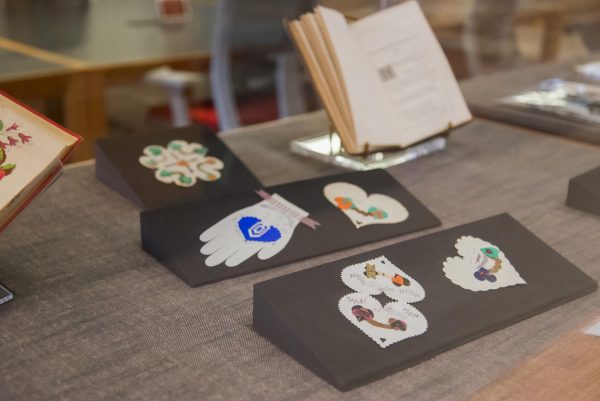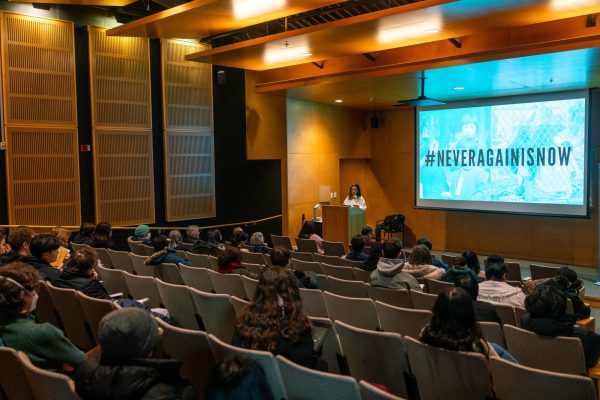Digital Platforms Cultivate Shared Vocabulary Among Students
The term “meme” was coined by British evolutionary biologist Richard Dawkins as a cultural parallel to the agency biological genes have over their reproduction. The theoretical claim is that memes are carriers of cultural information that can replicate, transfer, and evolve and are also subject to natural selection. Meme is a cultural analogy to genes — spreading by means of self-replication, and more importantly, mutation.
Meme iconography appropriates templates into a new way of interacting with people, using very visual language to translate jokes through references.
“When you look at the progression, from the very beginning of memes to now, I think that it really does progress in a similar way to any other art form that people would deem more respected,” College first-year Ian Lim said. “In 2010 you had the rage comics, then the white texts on images that everyone was putting everywhere, and this has kind of evolved and been deconstructed. Now it’s great to see student-run meme pages on Instagram and people on Yik Yak building these identities.”
Memes are replicated and transmitted through various mediums, although they are most commonly transferred verbally and visually. Digital platforms at Oberlin act as catalysts for the mutation and distribution of viral on-campus content. Jokes, thoughts, and ideas are communicated through a number of different channels, making Oberlin meme culture hard to pin down.
“I don’t really know if there is one way to characterize meme culture at Oberlin,” College fourth-year Ruby Denneen said. “I feel like there are a lot of different platforms; you have Yik Yak and the Oberlin [meme] accounts, and you have The Grape, which is like a meme platform in its own way.”
While digital communication does formulate a shared digital vocabulary, much of this new language is somewhat exclusionary.
“I feel like Yik Yak has its own culture which is not easily communicated to people who aren’t on Yik Yak,” Denneen said. “A lot of jokes are in relation to other posts, so you can’t really get the joke unless you saw the other post. I don’t necessarily think it is totally transferable.”
On and offline, memes and digital content in general play a massive role in formulating our experiences and understanding of our space, the current time, and the people who surround us. This digital campus, brought on by social media platforms such as Yik Yak and Instagram, has a presence even offline.
“[This culture] sort of mutates to a new space that is no longer only digital,” College first-year Max Newman said. “Even just different ways of talking slowly develop and show up around campus.”
Despite the many negative connotations of meme culture as well as social media at large, the generational desire to transform and share content is only made possible by the cultural circumstances provided by such software. Some platforms also serve as possible tools for campus communication.
“Honestly, [Yik Yak] is a huge resource, but people aren’t really taking advantage of it,” Denneen said. “I’m a [Resident Assistant], and last year we had an event where we were just handing out ice cream, and no one was coming to it. We posted on Yik Yak, ‘Come get ice cream,’ and then suddenly people started showing up. I also tend to share a lot of campus resources, so if I see someone posting something a little more concerning, I take the opportunity to tell them about Student Health Services or the Counseling Center.”
Platforms like Yik Yak and student-run meme pages offer people an insight into the campus. The existence of an online campus affects behaviors and vocabulary in and out of these digital spaces.
“I think that there is a digital campus, but personally, it doesn’t really affect my view of the campus as a whole,” Newman said. “I figured out pretty early on that Yik Yak and all of that is a pretty bad representation of what is actually going on around school. There is definitely a separation between the digital campus and the actual campus.”
One way to characterize current meme culture at Oberlin is by its constantly changing nature, as is the purpose of digital content. Gen Z humor has been described as post-post-ironic, and memes are a great example of that, allowing internet users to find humor in far-removed references to once-made jokes, styles, responses, or events.
“I honestly see things moving in a more surrealist direction,” Denneen said. “Memes are just getting more abstract, vibe-based, and punchline-based.”










